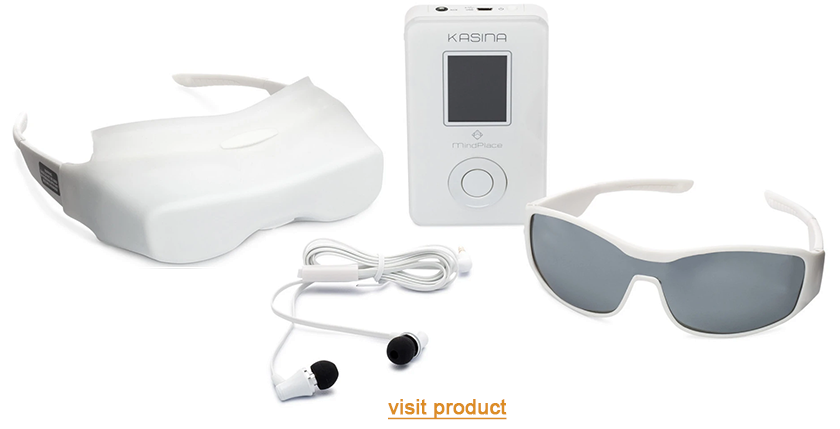
Ever noticed how certain sounds can instantly calm your mind? Whether it’s the soothing sound of rain or a favorite song, sound has the power to shift our mental state. In meditation, sound can be a powerful tool for guiding the mind into states of relaxation, focus, and even creativity. Using frequencies like theta waves or healing tones, sound meditation helps you reach those deep layers of calm and clarity.
Contents
What Are Healing Frequencies?
Healing frequencies are specific sound waves believed to promote physical, emotional, or mental well-being. Each frequency resonates differently with the body, supporting relaxation, focus, or even pain relief. These frequencies are often used in sound meditation as a way to bring the mind and body into harmony. They don’t require any special skills to enjoy—just listen, and let the frequencies work their magic.
Common Healing Frequencies and Their Benefits
- 174 Hz: Known for reducing pain and tension, making it a helpful frequency for physical relaxation.
- 285 Hz: Often used for healing and cell regeneration, this frequency promotes physical recovery.
- 396 Hz: Believed to reduce fear and anxiety, supporting emotional balance.
- 528 Hz: Known as the “Miracle Tone,” this frequency is said to support DNA repair and transformation.
- 963 Hz: Known for enhancing spiritual connection and a sense of unity.
Each of these frequencies serves a specific purpose, so you can choose one based on your goals for meditation. Whether you’re aiming to calm your mind, relieve stress, or connect with a deeper sense of self, healing frequencies provide a simple yet powerful way to support well-being.
The Science of Brainwave Entrainment
Brainwave entrainment is the process of using rhythmic sounds to synchronize the brain’s activity with a desired frequency. Our brains naturally produce electrical impulses, or brainwaves, that vary depending on our mental state. Through brainwave entrainment, we can encourage the brain to adopt specific wave patterns associated with relaxation, focus, or creativity.
Types of Brainwaves and Their Effects
- Delta Waves (1-4 Hz): Linked to deep, restorative sleep and physical healing.
- Theta Waves (4-8 Hz): Associated with deep relaxation, creativity, and the dreamlike state.
- Alpha Waves (8-12 Hz): Known for calm focus and relaxation, ideal for light meditation.
- Beta Waves (12-30 Hz): Tied to alertness, concentration, and active problem-solving.
- Gamma Waves (30+ Hz): Related to peak awareness and high-level cognition.
For meditation, theta and alpha waves are often the main goal, as they promote relaxation and support a meditative state. By using sound to “guide” the brain into these waves, brainwave entrainment makes meditation more effective and easier to sustain.
The Role of Theta Waves in Meditation
Theta waves are the stars of deep relaxation and meditation. These brainwaves are associated with daydreaming, creativity, and the subconscious mind. In theta, the brain slows down, allowing you to access states of calm and focus that feel almost dreamlike. Theta waves are often the goal of deeper meditation practices, as they allow the mind to enter a restful state without falling asleep.
How Theta Waves Influence the Mind
In theta, the mind becomes more open to creative insights and emotional healing. This state is linked to reduced stress, increased calm, and even improved problem-solving skills. By encouraging theta waves, meditation practitioners can access deeper layers of thought, often experiencing a sense of inner peace that’s hard to reach in regular waking states.
Theta waves are also helpful for processing emotions and memories, making them a valuable tool for anyone working through stress or mental fatigue. With regular practice, theta wave meditation can improve mental clarity and emotional resilience, making it easier to handle life’s ups and downs.
Using Binaural Beats and Isochronic Tones for Sound Meditation
Two popular methods of using sound in meditation are binaural beats and isochronic tones. Each offers a unique way to engage the brain and support mental balance, and both can be used to target specific brainwave frequencies.
Binaural Beats
Binaural beats involve playing two slightly different frequencies in each ear. The brain interprets this difference as a single “phantom” beat, guiding it toward the desired frequency. For example, listening to a 4 Hz binaural beat encourages the brain to produce theta waves, supporting relaxation and creativity. Binaural beats are ideal for deep meditation, stress relief, and even sleep improvement.
Isochronic Tones
Isochronic tones, on the other hand, are single beats spaced at regular intervals. Unlike binaural beats, they don’t require headphones, as the rhythm is clear and consistent. Isochronic tones are excellent for enhancing focus and alertness, making them a great choice for meditation sessions that require mental clarity.
Both binaural beats and isochronic tones can be tailored to specific meditation goals. By choosing the right frequency, you can guide your brain to relax, focus, or explore deeper mental states.
Creating Your Own Sound Meditation Practice
Starting a sound meditation practice is simple, and with a few steps, you can create a routine that fits your goals and preferences. Here’s a step-by-step guide to help you get started:
- Set Your Intention: Decide what you want to achieve. Are you aiming for relaxation, creativity, or mental clarity? Your goal will help guide your choice of frequency.
- Choose Your Sounds: Select a frequency or type of sound (such as binaural beats or healing tones) that aligns with your goal. Many meditation apps offer a variety of sound options to choose from.
- Create a Comfortable Space: Find a quiet, comfortable area where you can sit or lie down without distractions. A comfortable space enhances focus and helps you engage more fully with the meditation.
- Focus on Breathing: Let your breath flow naturally, syncing with the rhythm of the sound. If your mind wanders, gently bring it back to the sound and your breath.
With time, you’ll likely find that your mind begins to respond more quickly to the sound frequencies, making it easier to reach a meditative state and enjoy the benefits of sound meditation.
Tips for Maximizing Your Sound Meditation Practice
Sound meditation is a flexible practice, and there are many ways to enhance your experience. Here are some tips to help you get the most out of your practice:
- Experiment with Different Frequencies: Each frequency has unique benefits, so don’t be afraid to try different sounds to see what resonates best with you.
- Practice Consistently: Regular sessions help reinforce the benefits of sound meditation. Aim for daily practice, even if it’s just a few minutes.
- Combine with Visualization: Adding visualization to your meditation can deepen the experience, helping you connect with your goals and intentions.
With practice, sound meditation becomes a natural and enjoyable way to relax, focus, and explore deeper states of mind. By experimenting with different sounds and techniques, you can create a practice that supports your mental and emotional well-being.
Sound meditation isn’t just about relaxation; it’s a pathway to mental clarity, emotional balance, and even creativity. By tuning into healing frequencies or theta waves, you’re giving your mind the tools it needs to find calm, focus, and inspiration. Ready to explore the world of sound in meditation? The journey starts with a single frequency—press play, and let the sound guide you to peace.

